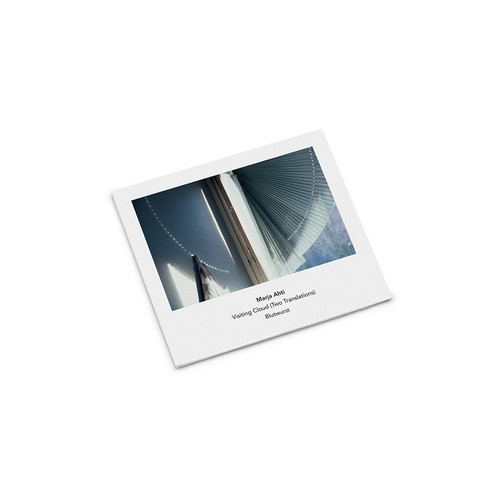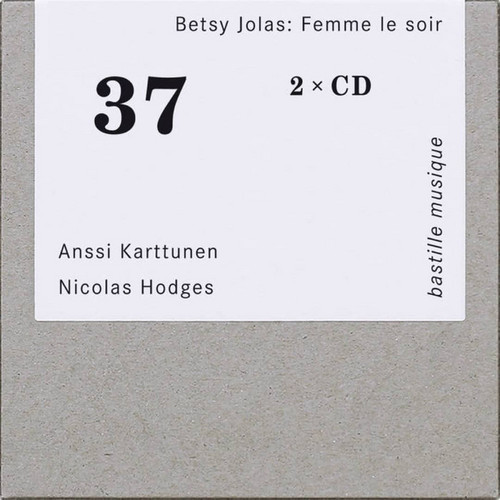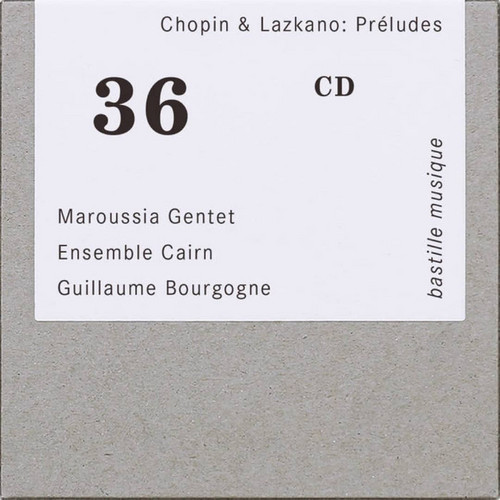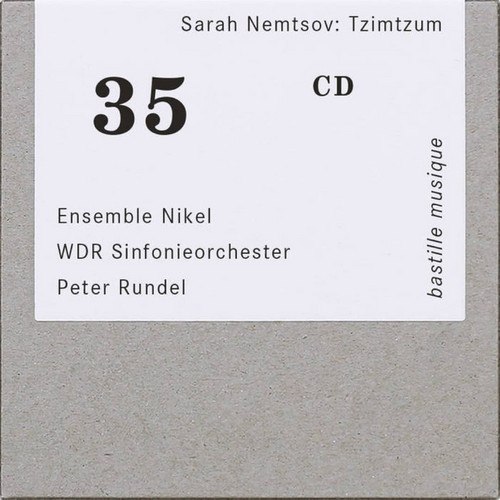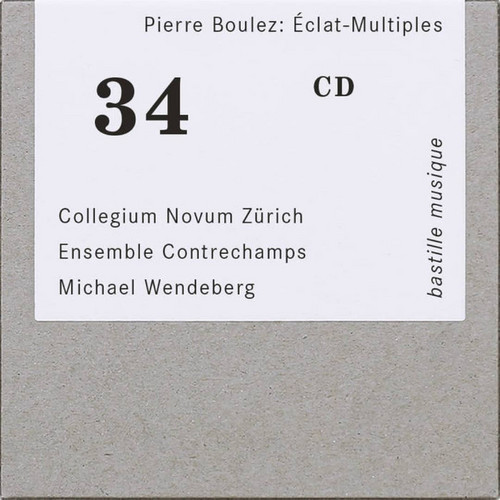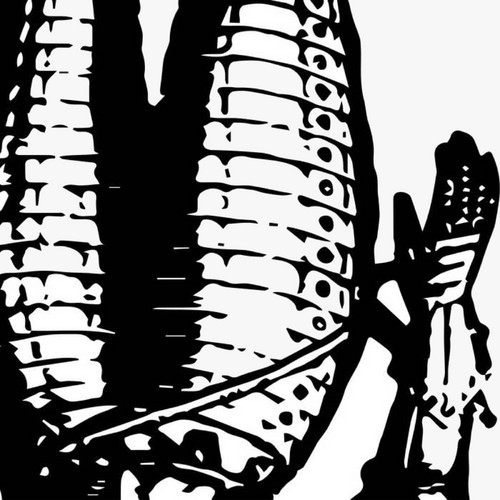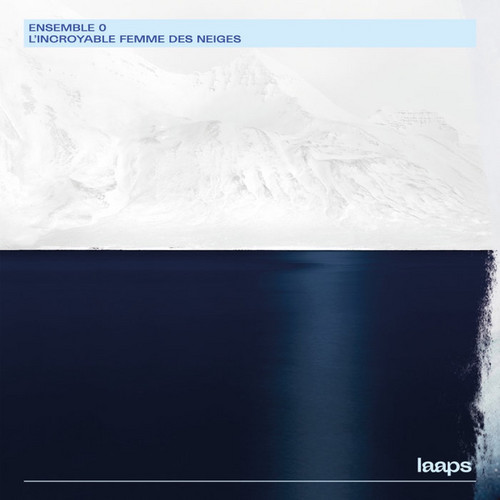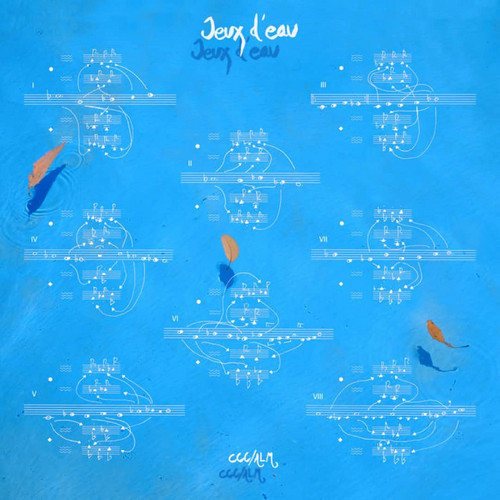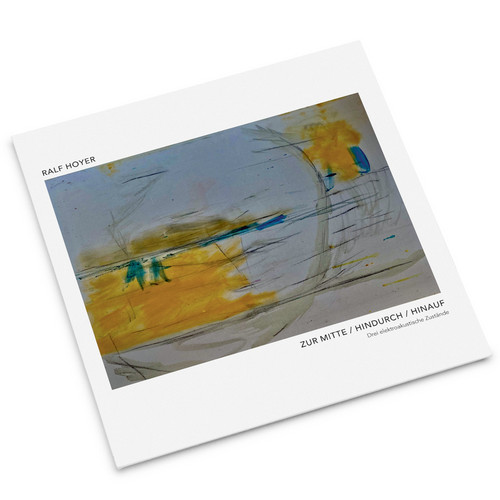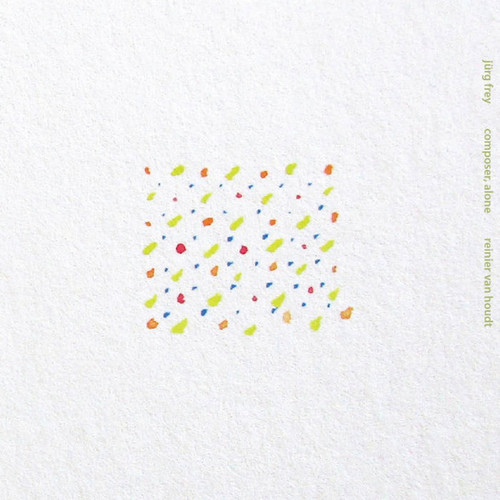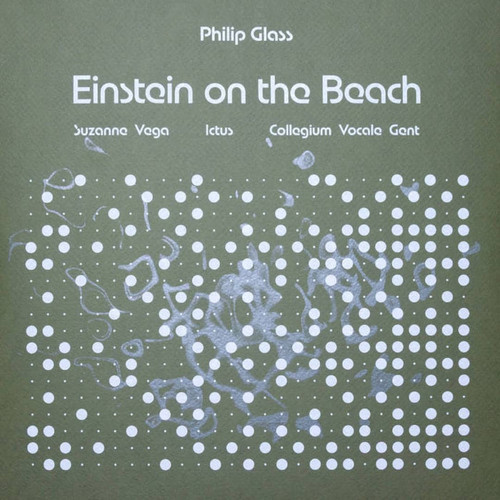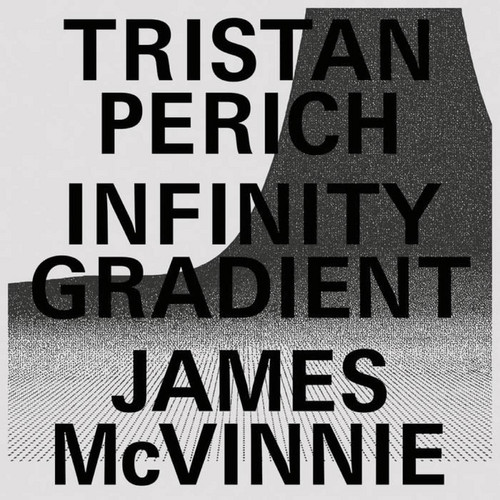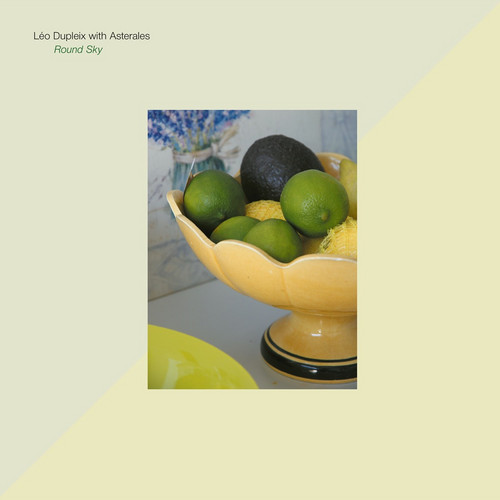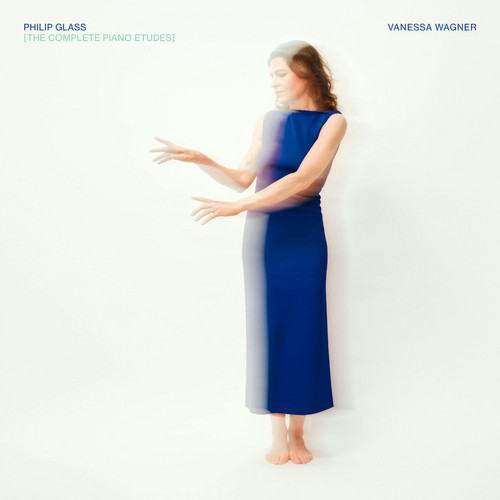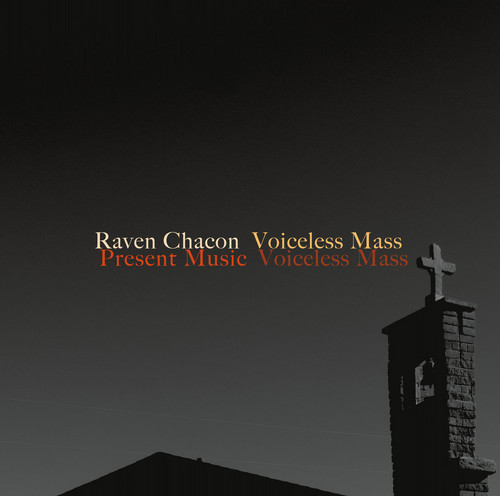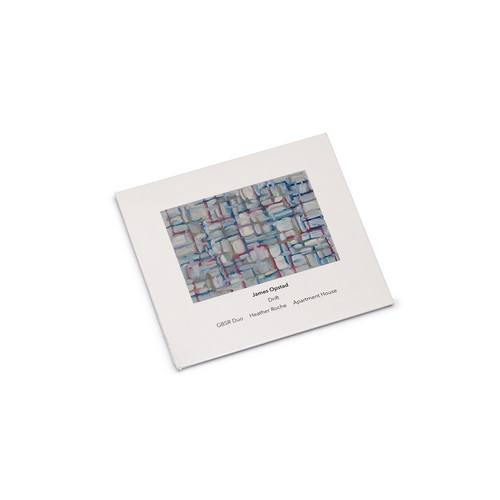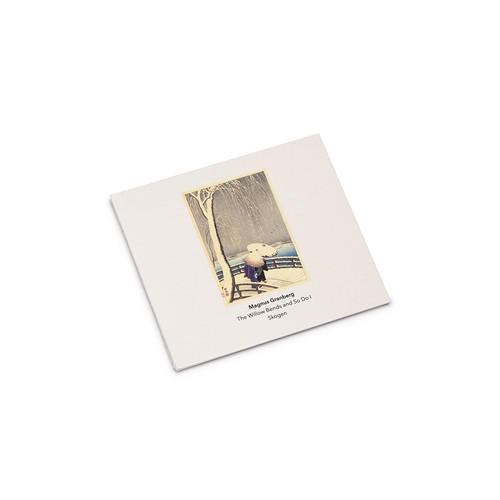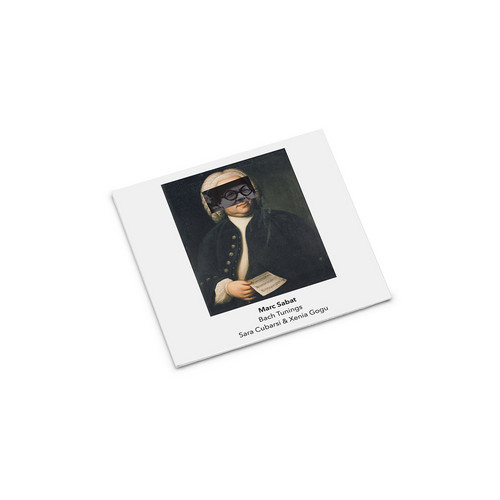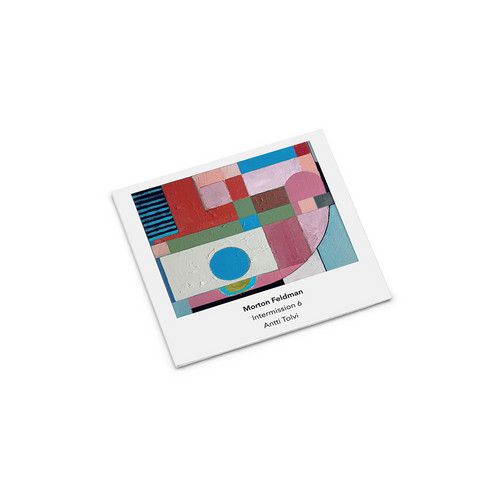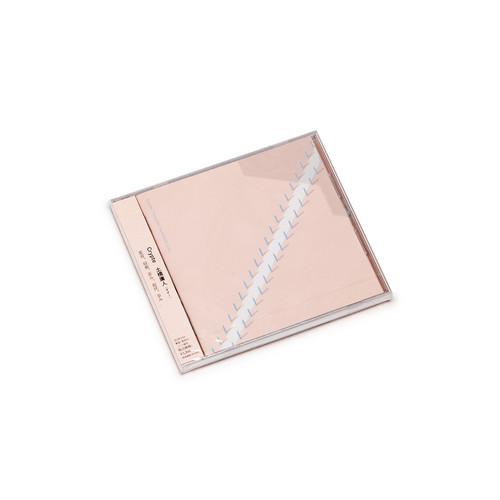Visiting Cloud
What happens when electroacoustic thought migrates into the physical realm of acoustic instruments? Visiting Cloud documents a three-year collaboration between Finnish composer Marja Ahti and Italian ensemble Blutwurst, where two of Ahti's electroacoustic works - Fluctuating Streams (from The Current Inside, 2019) and Chora (from Vegetal Negatives, 2018) - undergo radical transformation into acoustic versions that stretch, deepen, and reimagine their original forms. Initiated by Blutwurst in 202…
Betsy Jolas: Femme le soir
Femme le soir immerses listeners in Betsy Jolas’s world of memory, inquisition, and fleeting radiance, performed by Anssi Karttunen (cello) and Nicolas Hodges (piano). These pieces unravel at the tempo of spoken thought, suspending lyrical lines in unhurried motion and sudden illumination.
Chopin & Lazkano: Préludes
This double portrait places Chopin’s beloved Préludes in nimble counterpoint with new ensemble works from Ramon Lazkano, translated by Maroussia Gentet and Ensemble Cairn under Guillaume Bourgogne. The result is both homage and reinvention, unlocking resonances between eras through lyric immediacy and textural experiment.
Sarah Nemtsov: Tzimtzum
Tzimtzum imagines four sweeping new orchestral canvases from Sarah Nemtsov, weaving Ensemble Nikel’s hybrid-electric force with WDR Sinfonieorchester’s expressive palette under Peter Rundel. Her music traces broken cycles - rupture, echo, and repair - through deeply textured instrumentations and bold structural arcs.
Pierre Boulez: Éclat-Multiples
Éclat-Multiples unmasks Pierre Boulez’s music at its most mercurial and sensorial. Michael Wendeberg leads Collegium Novum Zürich and Ensemble Contrechamps through shifting prismatic textures, capturing Boulez’s fascination with timbre, spatial construction, and the suspended motion of silence and sound. Each gesture is meticulously contoured, reinforcing the line between energetic outburst and architectural poise.
The Dissolute Society Comprised of All Sorts
Isabella Gellis’s The Dissolute Society Comprised of All Sorts is a formidable debut for solo piano, performed by Joseph Havlat. Drawing inspiration from Biber’s baroque suite and cannibalizing its gestures, Gellis interweaves the surreal, the silly, and the tactile, forming a musical tapestry that refracts historical tradition through a vividly modern, sometimes absurd lens.
L'Incroyable femme des neiges
Ensemble 0 presents L'Étrange Femme des Neiges, a fresh addition to their exploratory discography and the official soundtrack to a new film featuring Blanche Gardin and Philippe Katerine. This release demonstrates Ensemble 0's knack for understated textures and melodic invention, crafting a sonic atmosphere that seamlessly blends cinematic intimacy with expressive minimalism.
Jeux d’eau
Jeux d’eau by Copenhagen Clarinet Choir and Anders Lauge Meldgaard is an electro-acoustic meditation inspired by the fountains of Villa d’Este. Blending clarinet resonance with the fluid timbres of the New Ondomo, the work reveals a continuous dialogue between water, sound, and human presence—where improvisation and structure merge like converging streams.
Zur Mitte / Hindurch / Hinauf
**Edition of 200 with artwork by Lutz Beckmann and liner notes by Ralf Hoyer.** Released on occasion of his 75th birthday, Edition Telemark presents the first LP since 1986 by German composer and sound artist Ralf Hoyer. Hoyer's versatile new music oeuvre includes works for chamber ensembles, choir, orchestra, chamber opera, as well as electronic, electro-acoustic and multi-media pieces. Hoyer grew up in East Berlin where he worked as a sound engineer for the GDR record company VEB Deutsche Scha…
Composer, alone
Composer, alone by Jürg Frey (performed by Reinier van Houdt) is a luminous retrospective stretching across three discs and 35 years. Twelve solo piano pieces—fragile yet substantial—trace Frey's evolution, distilling time and silence into crystalline musical objects. Van Houdt’s touch brings warmth and clarity, illuminating the invisible architecture within Frey’s sensitive landscapes.
Einstein on the Beach
The concert version of Einstein on the Beach by Ictus, Suzanne Vega, and Collegium Vocale Gent distills Philip Glass’s pioneering minimalism into a mesmerizing sound ritual. Stripped of Robert Wilson’s grand staging, Vega’s measured narration weaves through the ensemble’s crystalline precision, revealing the raw musical architecture of this modernist epic.
Infinity Gradient
Infinity Gradient unites Tristan Perich’s meticulous 1-bit electronics and the grand timbre of James McVinnie’s pipe organ in a sustained, seven-part exploration of sonic architecture. This hour-long symphony envelops listeners in a hybrid sound world that fuses mathematical clarity with the emotive breadth of the organ, traversing austere pulses and prismatic harmonic clusters with exceptional scale and subtlety.
Round Sky
Round Sky brings together Léo Dupleix and Asterales in an exploration of just intonation and radiant calm. The album’s three compositions subtly merge analogue synthesizer, harpsichord, spinet, bass, flute, and guitar in landscapes of nuanced minimalism. Methodical in structure yet alive to spontaneous beauty, the record unfolds as a quietly luminous meditation on the complexities of harmony and texture.
Philip Glass: The Complete Piano Etudes
Vanessa Wagner breathes new life into Philip Glass: The Complete Piano Etudes, revealing the powerful lyricism and subtle turbulence of Glass’s minimalist language. Her interpretation brings emotional intensity and poetic nuance across all 20 etudes, reflecting over a decade spent exploring the repertoire and making for an immersive listening experience.
Voiceless Mass
Deluxe 2LP Three-sided with etched artwork on Side 4. Raven Chacon begins by listening. The Diné composer, born in Fort Defiance, Arizona within the Navajo Nation in 1977, describes himself simply as a listener, but the attention he gives to sound encompasses far more than what's immediately audible—it includes what has been deliberately silenced. Yucca Alta Records now presents the first vinyl edition of Voiceless Mass, a three-sided double LP featuring Chacon's 2022 Pulitzer Prize-winning titl…
Drift
James Opstad is probably better known as the double bassist with Apartment House than as a composer. But this should change with this release—the first CD of his music as a composer. Five beautiful pieces tracking the evolution of Opstad's work as it moves from textural electro-acoustic music to pieces exploring the layering of instruments playing at slightly different tempi.
The album begins with "Nymphaea" (2020), performed by the GBSR Duo (Siwan Rhys, piano; George Barton, vibraphone), follow…
The Willow Bends and So Do I
This hour-long ensemble piece from 2024, recorded in Stockholm, marks the twelfth album by Swedish composer Magnus Granberg on Another Timbre. Granberg, born in Umeå in 1974, studied saxophone and improvisation at the University of Gothenburg and in New York, but is self-taught as a composer. He formed his ensemble Skogen in 2005 to integrate experiences, methods and materials from various traditions of improvised and composed musics into a new modus operandi. Apart from his ongoing work with Sk…
Bach Tunings
Bach's 3 Sonatas for Solo Violin, arranged by Marc Sabat for two violins using Just Intonation tunings, together with three short introductory pieces by Marc Sabat.
Intermission 6
Morton Feldman's Intermission 6 (1953) is a sparse piano piece that typically lasts between 3 and 12 minutes in standard performances. Finnish experimental musician Antti Tolvi has created a radical 72-minute realization that extends the work's meditation on silence and resonance to an unprecedented duration. Tolvi discovered the piece through Philip Thomas's five-CD Feldman Piano box set on Another Timbre, becoming fascinated by Intermission 6 as "the piece which has the most silence in it, and…
Crypte
Japanese guitarist Tsunehito Tsuchihashi, celebrated for his versatile artistry across both classical and contemporary repertoires, proudly presents his debut solo album, “Crypte.” This extraordinary recording, released in April 2025, brings together the visionary works of five contemporary composers, most written on commission and premiered by Tsuchihashi himself, showcasing his commitment to expanding the guitar’s expressive potential through innovative collaborations.
“Crypte” is a testament …
